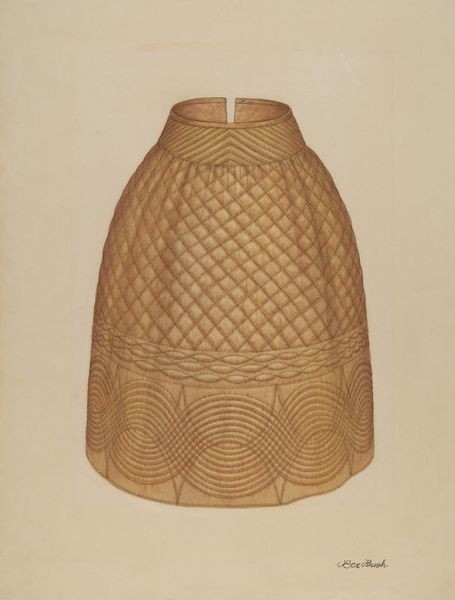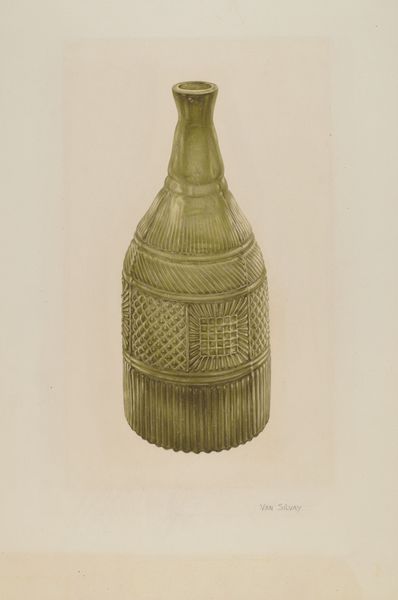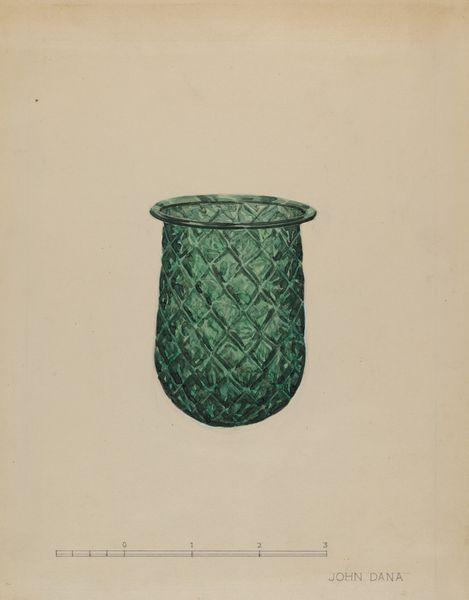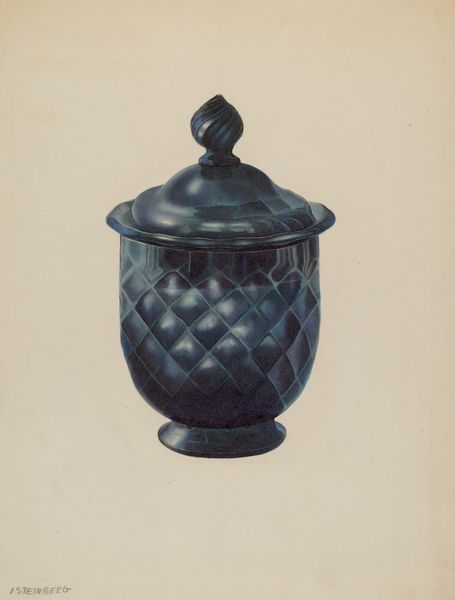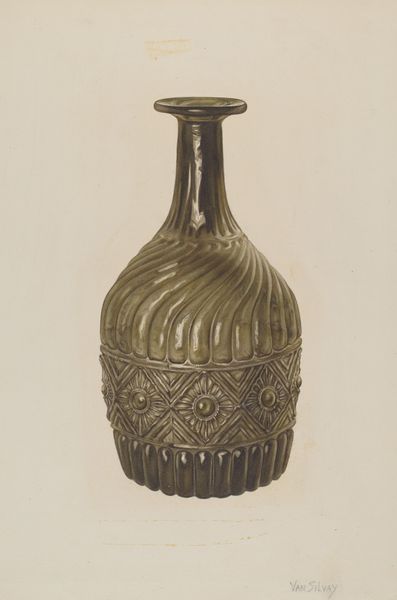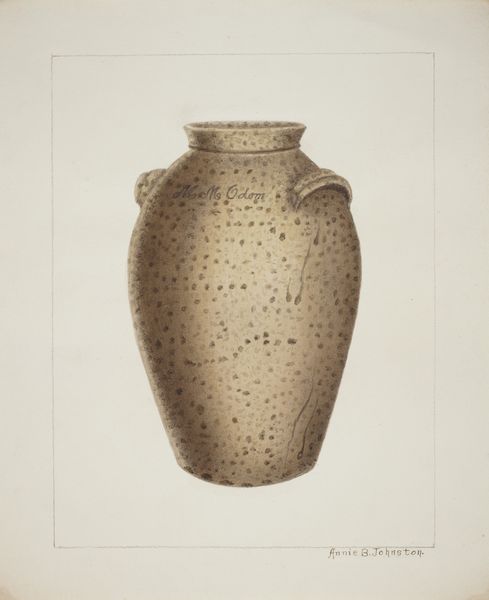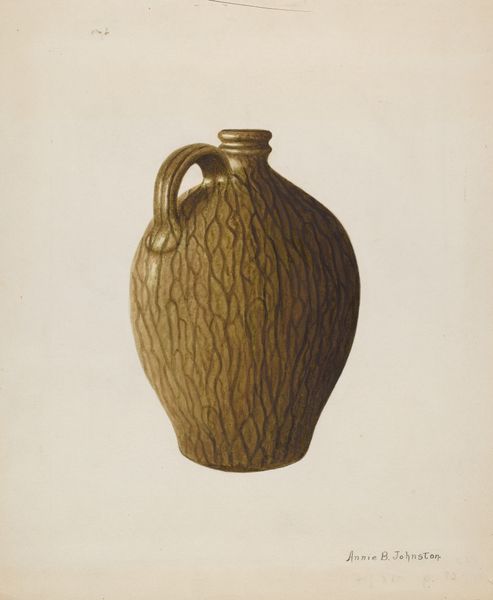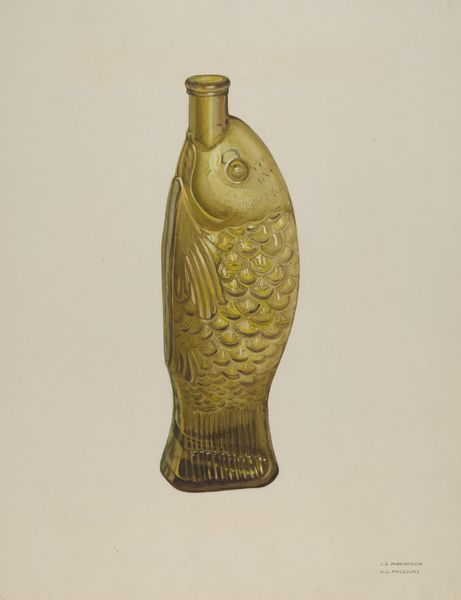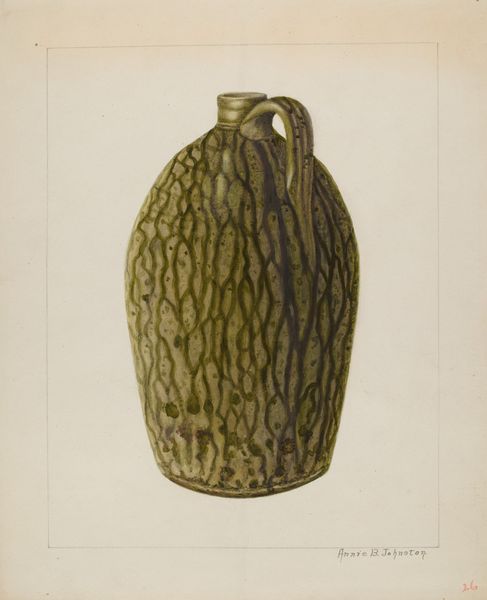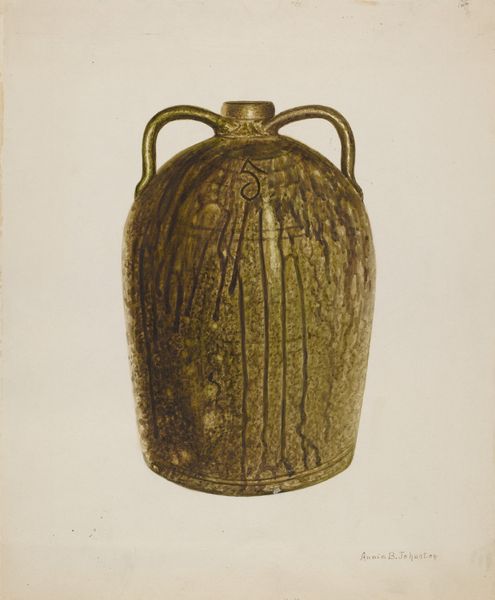
drawing, textile, watercolor
#
fashion design
#
drawing
#
textile
#
collage layering style
#
fashion and textile design
#
watercolor
#
historical fashion
#
wearable design
#
folk-art
#
underpainting
#
textile design
#
decorative-art
#
watercolor
#
ethnic design
#
clothing design
Dimensions: overall: 50.1 x 38.2 cm (19 3/4 x 15 1/16 in.)
Copyright: National Gallery of Art: CC0 1.0
Curator: This watercolor drawing by Rex F. Bush, dating to around 1938, is titled "Quilted Petticoat". It strikes me, at first glance, as possessing a certain geometric austerity. The composition is dominated by repeated shapes—diamonds and arcs. Editor: Austerity is one word for it. To me, the monochrome color palette and densely packed, almost topographical patterns evoke the resourcefulness of the Depression era, a visual representation of making do with less and yet, transforming the mundane into something… considered. Curator: Exactly. Notice the formal arrangement: the artist deploys an all-over compositional strategy where no area is left untouched, the effect produces a consistent visual field. It’s particularly interesting to consider how these two distinct visual regimes meet. Editor: Let’s not divorce this "Quilted Petticoat" from its original context—an undergarment that adds shape, warmth, and protection to the wearer. Petticoats historically reinforced gendered expectations of the body and social class. Is there a subtle commentary embedded in this decorative rendering of an otherwise hidden garment? The repetitive, almost hypnotic design could mirror the restricted lives many women led. Curator: The overall construction of Bush's forms suggest this is about pure aesthetic exploration. Take the upper portion—those perfectly rendered diamonds diminish into more organic, free flowing strokes toward the bottom; a transition, in effect, from the constructed to the natural. And what might the interplay of pattern, color, and textile communicate? Editor: I think it speaks of hidden histories. The skill required to quilt and assemble garments, typically done by women, was a means of creating economic stability. Perhaps Bush uses these forms, drawing the viewers’ attention to craft as both labor and lived expression. These patterns reference traditions like quilt-making and textile design, highlighting the cultural wealth inherent in folk art. Curator: Perhaps, but without further information about Bush's intentions, we can simply marvel at the visual system present within this lovely composition. Editor: Indeed. It offers many ways to engage, from contemplating form to social commentary.
Comments
No comments
Be the first to comment and join the conversation on the ultimate creative platform.
